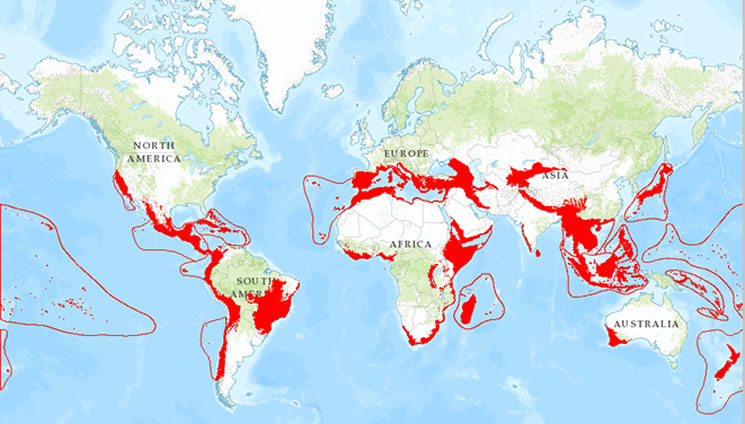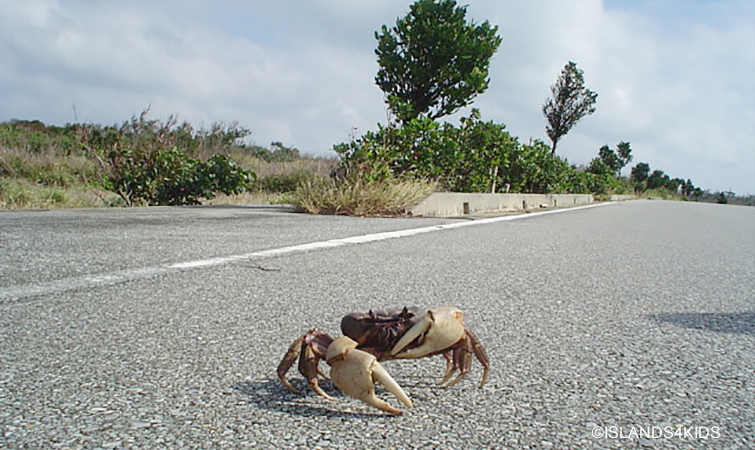 |
 |
| |

|
Biodiversity hotspots. What are they? |
| Biodiversity hotspots make up areas on Earth that contain rich reservoirs of plant and animal life. These unique regions of the world with high numbers of endemic species are unfortunately also home to most of Earth's threatened species. Endemic species are animals and plants that can only be found in a specific region and nowhere else in the world. They are reservoirs for unique and diverse biodiversity. 1 |
| |
 |
What is biodiversity? |
| Biodiversity or biological diversity broadly refers to the number of plant and animal species on the planet. Biodiversity is also the abundance (number) of different species living in a particular region. This makes up an ecosystem composed of a community of plants, animals, and other living things in a physical and chemical environment. It is important to maintain a wide diversity of species as every living creature lives in their own unique ecosystems and plays vital roles to sustain life. Plants, animals, and insects interact with one another to provide food, oxygen, shelter, and soil enrichment, for example.2 |
| |

The map above was produced by the Conservation Biology Institute in 2004 of biodiversity hotspots worldwide. Regions in red represent areas that are biodiversity hotspots, while the red lines represent the outer limits of hotspots. 3
Photo courtesy: The Conservation Biology Institute (CBI).
|
|
 |
Island biodiversity |
Looking at the map above, do you notice a trend in where biodiversity hotspots are generally located? What are some characteristics of regions or landforms that are biodiversity hotspots? If you look to the islands of Earth, you can see that they are primarily in red.
Islands are home to unique species. Some of the main ways those species came to live on islands is by drifting to islands, dispersing across the ocean to those islands, or when islands broke off from larger landmasses. Islands are isolated, small landforms that are oftentimes located far from larger landmasses. With time, this isolation creates a unique gene pool of new and unusual characteristics that is highly specialized to those island species. The small and confined nature of islands also tends to create limited genetic diversity and population sizes. Many of those island species are endemic, so they are only found on those islands and nowhere else.4 |
| |
|

|
Why care about biodiversity hotspots? |
Conservation of threatened and endangered species:
A threatened species is one that is at threat of becoming an endangered species. An endangered species is a plant or animal species that is at risk of going extinct. This means there are very little individuals left on Earth that are likely to be reduced to no individuals at all.
Some of the major threats to endangered species are habitat loss,
hunting and poaching, invasive species, diseases, and climate change. At the moment, extinction rate is thought to be occurring at a much faster rate than the excepted natural extinction rate. Large amounts of species are going extinct before they are even discovered! Endangered species typically have small population's sizes or have limited range and distribution. This means species may be especially vulnerable to threats and be wiped out.5 Once a species is wiped out to extinction, they cannot be brought back to existence. We need to become more proactive about conserving and managing endangered species before go extinct.

Oka-gani (crabs that live on land ) inhabit Ikema Island, Okinawa. From May to October, they cross the road to go to the beach to spawn eggs on nights with a full moon.
During their busiest season, police officers control the traffic so that the
Oka-gani can cross the road safely. |
 |
| |
 |
Ecosystem services: |
With a vast variety in ecosystems, the unique organization of the environment and its plant and animal species are also important for people living on islands. Around 600 million people (1/10 of the world’s population) live on islands. On islands, people rely on natural resources in their environment to directly and indirectly provide them with much of their economic, environmental, and cultural well-being. The multitude of diverse species provides islands with food, medicine, fresh water, fuel, and other raw materials used to support life on islands. These natural resources that humans benefit from are known as ecosystem services. These natural resources are also important aspects of the island, contributing to their culture, spirituality, education, security, and recreation.6 |
| |

|
References |
1. Conservation International. n.d. “The Biodiversity Hotspots”. Conservation International.http://www.conservation.org/where/priority_areas/hotspots/Pages/hotspots_main.aspx.
2. California Biodiversity Council. 2007. “What is Biodiversity?” University of California Agriculture and Natural Resources. http://biodiversity.ca.gov/Biodiversity/biodiv_definition.html.
3.
Conservation Biology Institute. 2004. “Biodiversity Hotspots Revisited. Conservation International. http://databasin.org/datasets/e5e1b415498249d0b511b0eef8625c12.
4. Convention on Biological Divserity. n.d. “What is Island Biodiversity?” United Nations Environment Programme. http://www.cbd.int/island/intro.shtml.
5. Arkive. 2014. “Endangered Species Fact File”. Wildscreen. http://www.arkive.org/endangered-species/.
6.Convention on Biological Divserity. n.d. “Island Biodiversity – Why is it important?” United Nations Environment Programme. https://www.cbd.int/island/whymatters.shtml. |
| |
|
 |
|